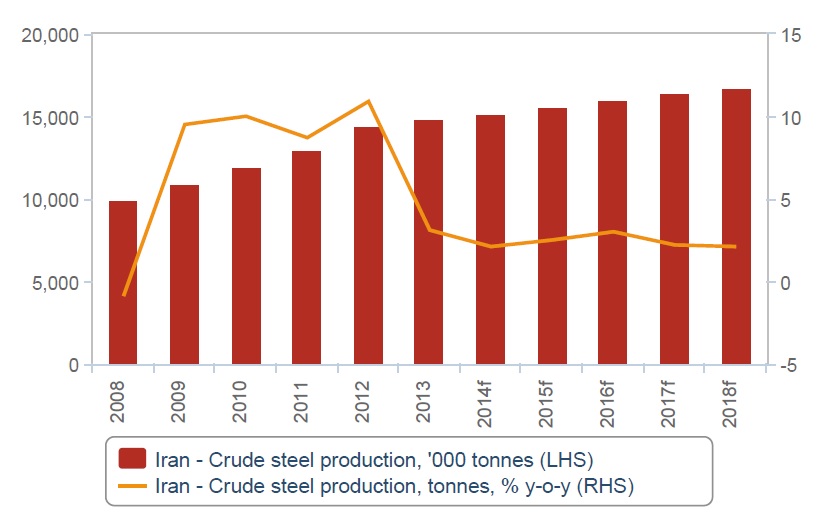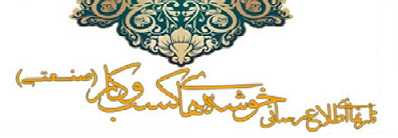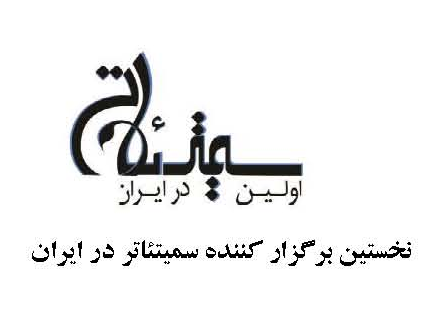صنعت فلزات در ایران- سه ماهه اول 2015
BMI Industry View
The outlook for Iran's metals sector is improving for the first time in years as sanctions begin to be eased following negotiations with the Western powers. On the whole, however, we are far from sanguine given our bearish outlook for steel prices and the fact that any rapprochement with the West, if indeed they happen, will be drawn out and not have a significant impact in the near term. We note with scepticism, Iran's plans to increase its steel capacity from 20mn tonnes per annum (mntpa) to 55mntpa by 2025, as well as a tripling of aluminium smelter capacity to 1.5mntpa.
While a cut in external trade has impacted negatively on the steel industry, isolation has ensured that imports have also been restricted. However, domestic industrial deficiencies in certain market segments mean that Iran will struggle to meet its own needs in spite of declining consumption. Crude steel output rose 11.1% year-on-year (y-o-y) to 13.27mn tonnes in the first 11 months of 2013, representing one of the strongest growth rates in the world, rivalling Turkey's.
Growth Slowing, But Still Elevated
Iran - Steel Output

Nevertheless, due to infrastructural problems and a lack of billet and rebar capacity, the country is still dependent on imports to serve the market, mostly those from Turkey. Meanwhile, growth in the manufacturing of steel products has slowed markedly, with existing crude steel capacities unable to sufficiently supply to downstream industries and therefore exacerbating the dependence on imported supplies. Weak points remain, with flats demand coming under pressure as automotive output suffers from declining domestic demand. Over the medium term Iran will be reliant on exports at a time when it is becoming harder to sell on external markets.
Iranian trade has been affected by international sanctions, with the country having to manoeuvre strategically to meet domestic demand and maintain the robust production growth seen a few years ago.
We forecast that growth will remain robust in Iranian steel production; however, this will begin to slow down from 2014 until the end of our forecast period in 2018.
The country's political situation has affected many of its trade dynamics and the negative impact on imports and exports of steel has meant that the domestic industry has had to find a way to ensure that demand is met by ramping up production and clearing stockpiles to make room for imported steel.
Prior to the intensifying international sanctions imposed on Iran, the nation would rely on a significant amount of exports to other Arabian countries in the Gulf region; however, companies in the Arabian Gulf have simultaneously been expanding their capacities rampantly off the back of sustained demand in the region. This has meant that steel prices in Iran have been heading downwards as companies seek to offload their steel stockpiles by selling at a lower price.
گزارش تحلیلی بیزینس مانیتور- صنعت فلزات در ایران- سه ماهه اول 2015

